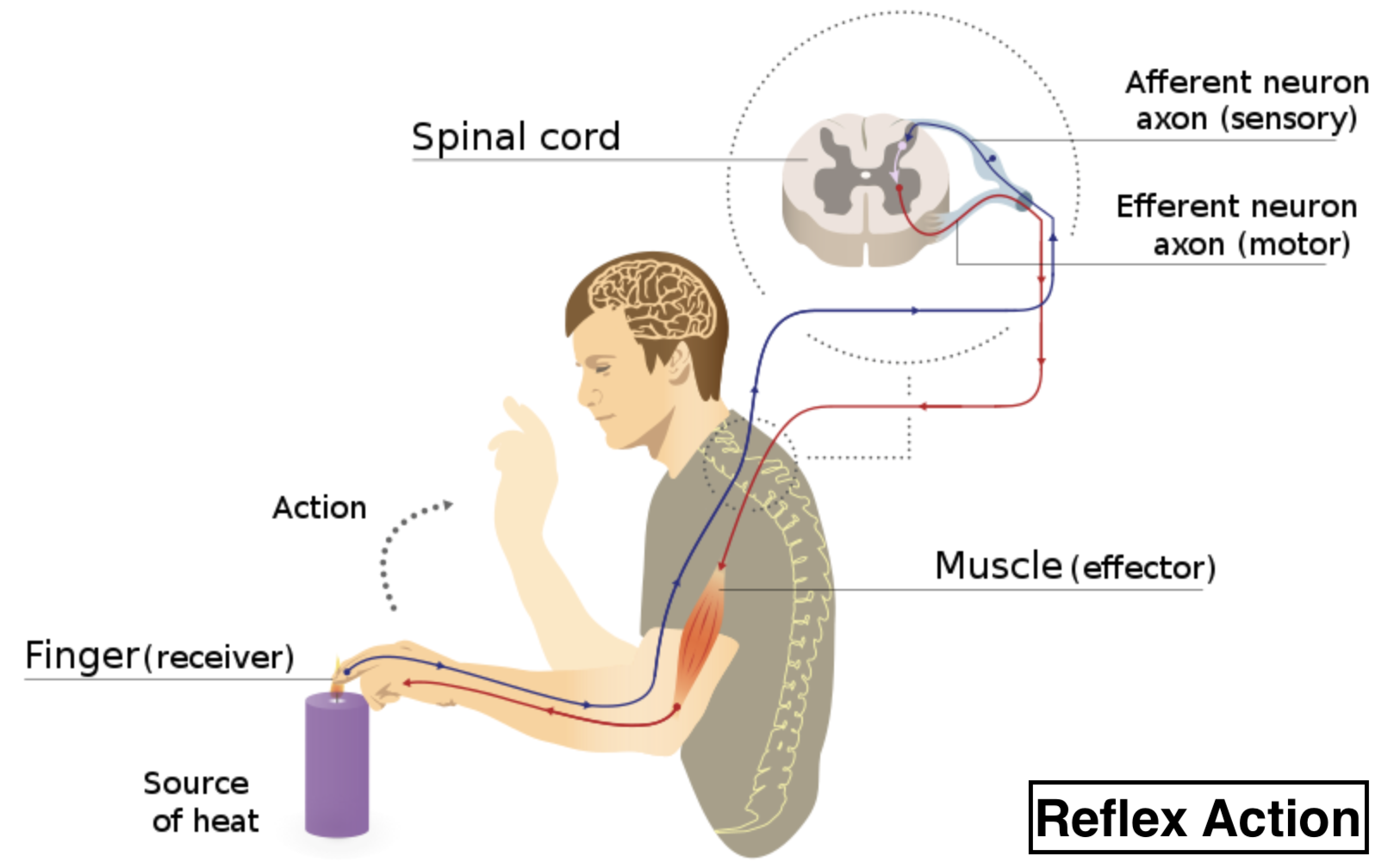
Distinguish between
(a) Afferent neurons and efferent neurons
(b) Impulse conduction in myelinated nerve fiber and unmyelinated nerve fiber
(c) Aqueous humor and vitreous humor
(d) Blindspot and yellow spots
(e) Cranial nerves and spinal nerves
Answer
555.9k+ views
Hint: Our nervous system is basically of two types; the first one is the central nervous system which includes the brain and spinal cord and the second one is the peripheral nervous system which consists of a network of neurons, spans the organ, muscle, and the body.
Different and different neurons interface the central nervous system (CNS) to create a signal transmission pathway, which coordinates function in the body. The brain and spinal cord are responsible for the formation of the central nervous system.
Complete answer:
Additional information: The third type of neuron is called the interneuron or association neuron, which acts as a middleman between the afferent and efferent neurons. These neurons are situated in the central nervous system (the brain and spinal cord). Different and different neurons need to cooperate so as to detect and react to stimulus, but they don't straightforwardly associate.

Association neurons help to bridge the gap for relaying the information between sensory and motor neurons.
Note: Different and different neurons are important for your somatic nervous system, which is responsible for all the voluntary muscle developments in your body. At the point when you kick a ball, scratch your head, or do push-ups at the exercise center, afferent and efferent neurons are assessing improvements and permitting you to react. Interneurons, then again, are an essential part of the central nervous system.
Different and different neurons interface the central nervous system (CNS) to create a signal transmission pathway, which coordinates function in the body. The brain and spinal cord are responsible for the formation of the central nervous system.
Complete answer:
| Afferent neurons | Efferent neurons |
| Afferent neurons perform the sensory impulses from the receptors to the central nervous system. | Different neurons perform motor impulses from the central nervous system to the effector organs like muscles. |
| They are present in the sense organs. | They are taking place in the brain and the spinal cord. |
| They are sensory neurons. | They are motor neurons. |
| Its shape is rounded and smooth. | The shape of different neurons is satellite shaped. |
Additional information: The third type of neuron is called the interneuron or association neuron, which acts as a middleman between the afferent and efferent neurons. These neurons are situated in the central nervous system (the brain and spinal cord). Different and different neurons need to cooperate so as to detect and react to stimulus, but they don't straightforwardly associate.

Association neurons help to bridge the gap for relaying the information between sensory and motor neurons.
Note: Different and different neurons are important for your somatic nervous system, which is responsible for all the voluntary muscle developments in your body. At the point when you kick a ball, scratch your head, or do push-ups at the exercise center, afferent and efferent neurons are assessing improvements and permitting you to react. Interneurons, then again, are an essential part of the central nervous system.
Recently Updated Pages
Master Class 12 Business Studies: Engaging Questions & Answers for Success

Master Class 12 Economics: Engaging Questions & Answers for Success

Master Class 12 English: Engaging Questions & Answers for Success

Master Class 12 Maths: Engaging Questions & Answers for Success

Master Class 12 Social Science: Engaging Questions & Answers for Success

Master Class 12 Chemistry: Engaging Questions & Answers for Success

Trending doubts
What is meant by exothermic and endothermic reactions class 11 chemistry CBSE

Which animal has three hearts class 11 biology CBSE

10 examples of friction in our daily life

One Metric ton is equal to kg A 10000 B 1000 C 100 class 11 physics CBSE

1 Quintal is equal to a 110 kg b 10 kg c 100kg d 1000 class 11 physics CBSE

Difference Between Prokaryotic Cells and Eukaryotic Cells




